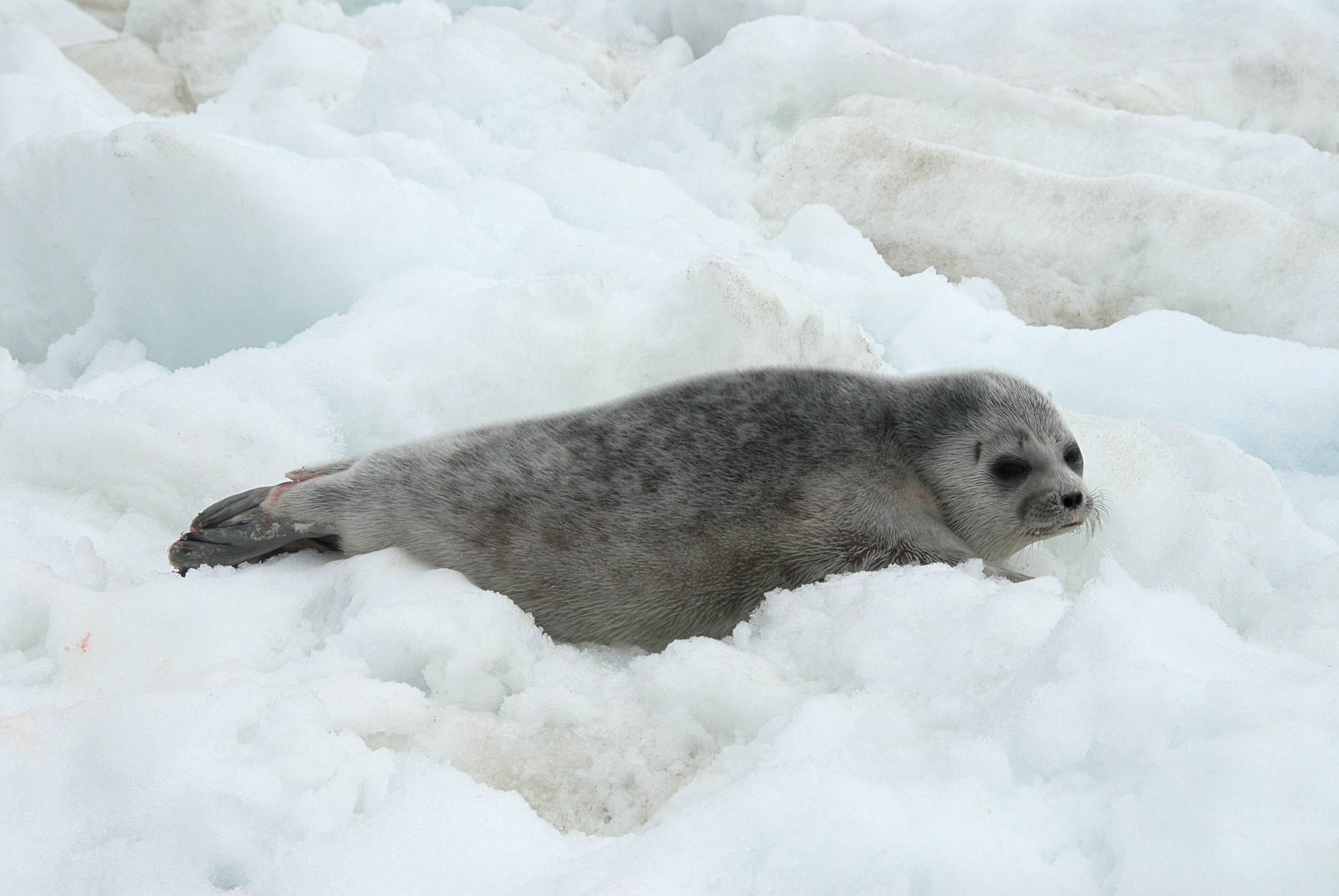State of Alaska and partners seek to overturn ringed seals’ threatened listing
The state, the North Slope Borough and two Alaska Native groups say the designation was made "based on erroneous information."

Ringed seals, dependent on Arctic sea ice and the snow atop it, are too plentiful and healthy to warrant Endangered Species Act protections, the state of Alaska, North Slope Borough and other allies are arguing.
The state, borough and two Alaska Native organizations — the Inupiat-owned Arctic Slope Regional Inc. and the Inupiat Community of the Arctic Slope, a tribal government — have submitted a petition to the federal government seeking to delist the Arctic population of ringed seals.
The threatened listing that was designated for ringed seals in 2012 is now shown to have been “based on erroneous information,” the state and its partners said in their March 26 petition to the National Oceanic and Atmospheric Administration’s National Marine Fisheries Service.
Continued listing will be a hardship, hindering oil and gas development and traditional Inupiat hunting, the petition said:
“To maintain their traditional ways of life, Alaska Natives depend on the use of their ancestral lands, waters, and subsistence species free from unnecessary restrictions on community and economic development, subsistence uses, and other activities. The listing decision also impacts the State of Alaska’s natural resource management and economic development interests and the revenues provided for the Alaska Permanent Fund,” the state’s oil-wealth fund.
Eddie Grasser, director of the Alaska Department of Fish and Game wildlife division, said NMFS fears that ringed seals would be harmed by Arctic climate warming have been shown to be unfounded. “We want the federal government to reevaluate the decision,” he said.
The ringed seal population has not declined, he said, and the most recent information shows that the animals are faring well despite the Arctic’s changes. “Our research shows that body condition or fat stores have not declined,” he said.
It is not the first time that the state and its allies have sought to revoke Endangered Species Act protections for ringed seals, the most common of the Arctic’s ice-dependent seals.
The state, the borough, ASRC and oil industry groups sued the Obama administration in 2013 to overturn the threatened listing, as well as a similar listing for bearded seals. In 2016, U.S. District Court Judge Ralph Beistline, based in Alaska, agreed with some of their arguments and struck down the ringed seal listing as “arbitrary and capricious.” He concluded that the listing had been based on information that was too speculative. But the 9th Circuit Court of Appeals, in a decision issued in early 2018, said the listing had been legally justified. NMFS reinstated the protections and said it was restarting work to identify critical habitat for the threatened ringed seals. An earlier proposal for ringed seal critical habitat, which would have been designated an area more than twice the size of California and would have been the largest-ever U.S. critical habitat designation, had been shelved after Beistline’s 2016 ruling.
No new critical habitat proposal has been announced yet. On March 14, the Center for Biological Diversity announced plans to sue NMFS over the lapse, saying the failure to designate ringed seal critical habitat violates the Endangered Species Act.
An earlier proposal for ringed seal critical habitat, which would have been designated an area more than twice the size of California and would have been the largest-ever U.S. critical habitat designation, was shelved after Beistline’s 2016 ruling.
The threatened listing for ringed seals resulted from long legal fight over all ice-dependent Arctic seals. It grew out of 2008 petitions for listing of ringed, bearded, spotted and ribbon seals, all species that use Arctic sea ice.
Ringed seals are particularly vulnerable to climate warming, according to NMFS, because they use snow atop sea ice as material for lairs that protect newborn pups. The warming occurring in the Arctic is not only reducing sea ice but also bringing more rains that wash away the snow and leave pups vulnerable to cold and predators, according to scientists.